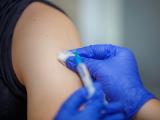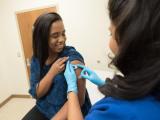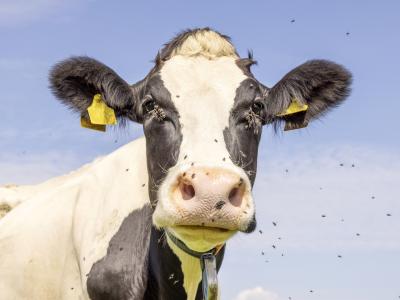Jul 5, 2006 (CIDRAP News) – The Food and Drug Administration (FDA) on Jun 30 sent a warning letter to Sanofi Pasteur, Inc., about contamination in a component of Fluzone, the influenza vaccine the company is preparing for the 2006-07 season.
Both the FDA and the company said they did not expect the problems to significantly limit production of the vaccine for this season. The company has said it plans to make about 50 million doses, which could be roughly half the US supply.
The warning letter discusses contamination of one of the monovalent concentrates, a preparation of one of the three strains of killed flu virus used in the vaccine. The monovalent concentrates are mixed to make the trivalent vaccine, which protects against the three viral strains, the FDA said.
According to the FDA, Sanofi Pasteur notified the FDA on Mar 31 about sterility failures in monovalent concentrates. The FDA inspected the company's Swiftwater, Pa., facility from April 18 to 28 and issued a report to the company. After determining that the company's response to the report was inadequate, the FDA issued the Jun 30 warning letter.
The five-page letter describes a number of "significant deviations from current good manufacturing practices." The letter says the company must take prompt corrective actions or risk facing enforcement steps, such as license suspension.
According to a July 4 USA Today report, the FDA's Karen Midthun said no more lots of monovalent vaccine have failed sterility testing, but "since we don't know exactly what it was that caused the failure, we can't know for sure if it has been corrected." Midthun is deputy director of the FDA Center for Biologics Evaluation and Research.
The failed lots of monovalent concentrate represented a small proportion of the total produced and were not used for further processing, said the FDA. The agency noted that influenza vaccine manufacturers generally produce monovalents of each strain throughout winter and spring and then assemble the final vaccine in early summer.
David Johnson, director of scientific and medical affairs for Sanofi Pasteur, said the company believed that the contaminants came from organisms in the chicken eggs used to make the vaccine and that the company was quickly addressing the problem, according to USA Today.
In February, Sanofi said it planned to produce about 50 million doses of Fluzone for US distribution, which would represent roughly half of the US flu vaccine supply. According to a Jul 3 Reuters report, the company said it was confident that it would supply 50 million doses in time for fall vaccinations.
The Centers for Disease Control and Prevention said last week that vaccine manufacturers expect to make about 100 million doses of vaccine for US distribution in the upcoming fu season.
After production problems with Chiron's influenza vaccine in 2004, which led to serious vaccine shortages, the FDA instituted annual inspections of vaccine manufacturers in 2005. Following its inspection of the Sanofi Pasteur facility last year, the FDA recommended a list of corrective actions. During its recent inspection the FDA determined that some of the problems remained, along with additional concerns.
















